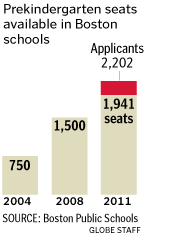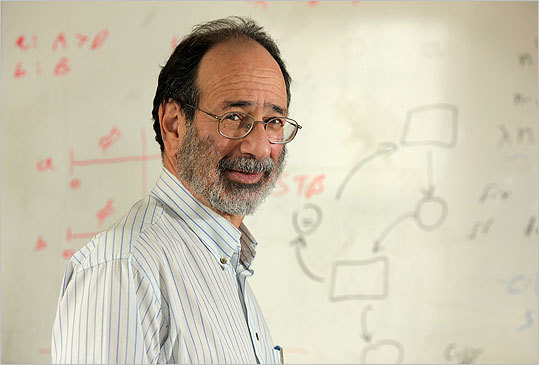Many of the unmatched children interviewed in the story, who now have to participate in an additional round of matching to get their school assignments, only ranked a few school programs (instead of the 12 they are allowed to rank), and also seem to have received bad advice in other ways, like the child mentioned at the end of this quoted section.
"This year, of the 78,747 students who applied, the computer matched 83 percent to one of their top five choices. An additional 7 percent were matched to schools lower on their lists. The rest, like Radcliffe, were unmatched. Over the past three years, officials said, there has been a slight but steady increase in the number of unmatched students, up from 8 percent last year and 7 percent in 2009.
One new variable this year was the department’s publishing of graduation rates in school descriptions, which caused a surge in applications to the best schools, said Robert Sanft, the chief executive of the Office of Student Enrollment. The competition at many of those top schools meant long-to-impossible odds. Baruch College Campus High School, with a 100 percent graduation rate, received the most applications from across the city: 7,606 for 120 seats, giving it an acceptance rate of about 1.6 percent (Harvard, by contrast, accepted 6.2 percent of its applicants.)
But geography was a significant factor for Baruch, especially for those who, like Radcliffe, applied from outside Manhattan. According to Baruch’s principal, Alicia Perez-Katz, the school, created for Manhattan’s District 2, has not accepted out-of-district students in many years, a fact not mentioned in the Education Department’s school profile."
At the beginning of April, I responded to an email describing the plight of an unmatched student (who had only applied to six programs, none of which, I am informed, had ever accepted a student with his solid but not spectacular math grades), as follows.
Dear Jimmy: I'm sorry to hear that you weren't matched in the main round of the high school admissions process. I know that is very stressful.
I helped design the choice algorithm in 2003-04, but I have no role in its continued operation, and I don't know which schools may be available now. So you need to get advice from people with current, hands-on experience. Your guidance counselor might be a good person to start with, on Monday if you can.
As you indicate in your email, the next step of the process is to get matched to some school in the supplemental round. After that there is an appeals process. My advice is to take the supplemental round seriously. For a start, you might take a quick look at the advice here: http://insideschools.org/blog/2011/04/01/no-high-school-match-heres-what-to-do/
You may also be able to get some information now from the Office of Student Enrollment Planning and Operations (OSEPO). At the very least they can give you the information you will need to participate in the appeals process.
If you don't get into a school you are happy with, there are transfer options that you can pursue to change schools for 10th grade.
I hope you won't give up on your ambition to go to Harvard after you graduate from high school. I'll be very glad to meet you if you come here. But when it comes time to apply to colleges, bear in mind that admission to Harvard and other top universities is very competitive, so be sure to apply to other schools, including some safe schools.
Best of luck,
Al Roth"
So, for next year, I have two bits of advice, for students and for the schools.
For students: use all 12 choices. The system is designed so listing 12 choices won't hurt your chance of getting one of your top ones. But if you don't get one of your top choices, having some other schools on your list that you wouldn't mind going to will save you some heartache.
For schools and guidance counselors: give these kids more useful advice! They should be told if the lists they are submitting include only schools for which they have little or no chance of being accepted.
So, for next year, I have two bits of advice, for students and for the schools.
For students: use all 12 choices. The system is designed so listing 12 choices won't hurt your chance of getting one of your top ones. But if you don't get one of your top choices, having some other schools on your list that you wouldn't mind going to will save you some heartache.
For schools and guidance counselors: give these kids more useful advice! They should be told if the lists they are submitting include only schools for which they have little or no chance of being accepted.











